Hidden under the world's oceans, these lost cities have inspired tall tales and expensive expeditions alike. Let us take you through these antiquated wonderlands whilst keeping your feet firmly on dry land.
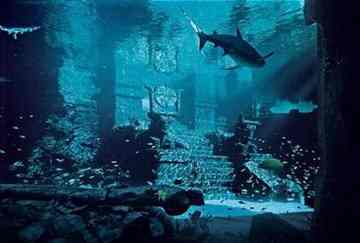 Heracleion, Egypt: Discovered in 2000 by French archaeologist Franck Goddio, Heracleion was the main sea port of the Pharaohs before Alexander the Great founded Alexandria around 331 BC.
Heracleion, Egypt: Discovered in 2000 by French archaeologist Franck Goddio, Heracleion was the main sea port of the Pharaohs before Alexander the Great founded Alexandria around 331 BC.
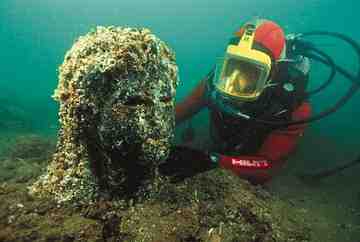 Washed into the ocean around 1000 years ago, probably by a tsunami, archaeologists have found a city almost untouched by time, full of colossal statues, hieroglyphic tablets and an extraordinary store of gold coins and jewellery from the time of Cleopatra, the last Egyptian queen.
Washed into the ocean around 1000 years ago, probably by a tsunami, archaeologists have found a city almost untouched by time, full of colossal statues, hieroglyphic tablets and an extraordinary store of gold coins and jewellery from the time of Cleopatra, the last Egyptian queen.
Choquequirao, Peru: Machu Picchu’s lesser known sibling city in South Peru, Choquequirao is two days trek into the spurs of the Salkantay Mountain Range in the Cusco region above the valley of river Río Apurímac.
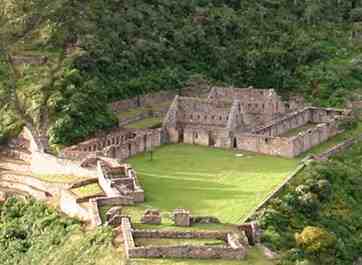 The complex is 1,800 hectares, of which 30-40% is excavated and may well have been the last place of resistance by the Inca people after the Spanish siege of Cusco in 1535.
The complex is 1,800 hectares, of which 30-40% is excavated and may well have been the last place of resistance by the Inca people after the Spanish siege of Cusco in 1535.
Fuxian Lake, China: Hidden for millennia underwater in China’s second deepest lake, this 1.7 square mile (2.7 square km) site, found by diver Geng Wei in 2005, may be the ancient city of Yuyuan dating back to the Qin and Han dynasties of 2000 years ago.
 Chinese reports describe two large pyramids similar to those found at Mayan sites in South America and a coliseum. Although Chinese documents make no reference to the city, local legend described how building silhouettes were visible under the lake from the nearby mountains on clear days.
Chinese reports describe two large pyramids similar to those found at Mayan sites in South America and a coliseum. Although Chinese documents make no reference to the city, local legend described how building silhouettes were visible under the lake from the nearby mountains on clear days.
Yonaguni Jima, Japan: Known as the Japanese Atlantis, these ruins lie in shallow waters just off Yonaguni Jima and seem to be the remains of an advanced Asian culture washed into the sea by an earthquake 2000 years ago.
 Discovered by divers in 1985, excavation continues in the area producing never seen before artefacts, including a huge, underwater Sphinx.
Discovered by divers in 1985, excavation continues in the area producing never seen before artefacts, including a huge, underwater Sphinx.
Sunken City, Cuba: In May 2001 a Canadian company mapping the ocean bottom of Cuba’s international waters discovered an unexpected archaeological treasure trove when they picked up sonar readings which suggested huge, megalithic ruins 2,200 feet (671 metres) below the surface of the ocean.
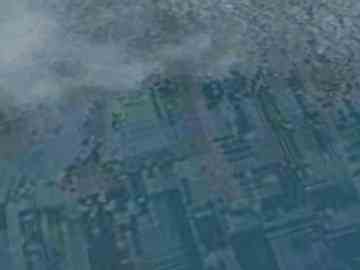 Immediately jumped upon by the popular press as a possible site for Atlantis, National Geographic magazine reported the story in 2002, however further study of the site has not yet been forthcoming.
Immediately jumped upon by the popular press as a possible site for Atlantis, National Geographic magazine reported the story in 2002, however further study of the site has not yet been forthcoming.
Atlantis: Ever since Plato first referred to Atlantis in his book, Timaeus around 360 BC, adventurers have been hunting for the site of this lost city. Over the centuries locations have been suggested from Antarctica to Cuba, although most ancient scholars now agree that Plato was probably referring to the Cretan civilisation of Minoa which vanished around 1500 BC.
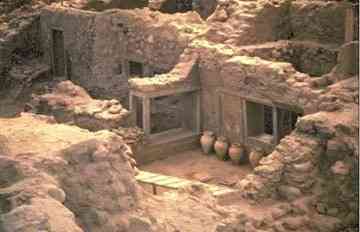 Modern geological surveys suggest that Santorini, a Greek volcano just north of Crete, exploded at around this time with a force that would have swamped Crete and the Minoans under a huge tsunami.
Modern geological surveys suggest that Santorini, a Greek volcano just north of Crete, exploded at around this time with a force that would have swamped Crete and the Minoans under a huge tsunami.
Mahabalipuram, India: Immediately prior to the 2004 tsunami in the Indian Ocean, the ocean pulled back some 1640 feet (500 metres), draining centuries of sediment from the ocean floor and exposing artefacts long covered by silt.
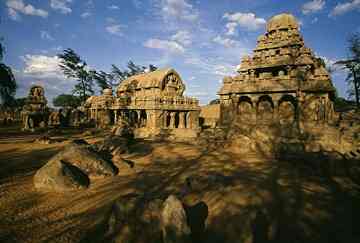 The most famous of these was a large stone lion left uncovered on Mahabalipuram beach and subsequently dated by archaeologists to 7 AD. Further sonar searches turned up two submerged temples, a cave temple and a city wall just 1640 feet (500 metres) from the shore.
The most famous of these was a large stone lion left uncovered on Mahabalipuram beach and subsequently dated by archaeologists to 7 AD. Further sonar searches turned up two submerged temples, a cave temple and a city wall just 1640 feet (500 metres) from the shore.
Port Royal, Jamaica: After the British took Jamaica from the Spanish in 1655, Port Royal quickly became known as the ‘Wickedest City on Earth’ as pirates and traders swarmed to the Caribbean port.
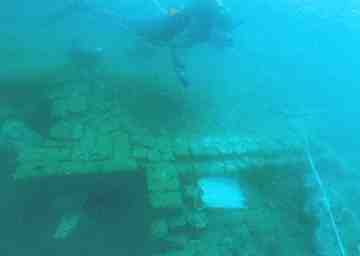 Then on the morning of June 7 1692, at 11.43am, a massive earthquake sent nearly 33 acres of the city straight to the bottom of Kingston harbour. The exact time of the disaster is known from a pocket watch recovered from the ocean floor during the first excavation of the site in 1960.
Then on the morning of June 7 1692, at 11.43am, a massive earthquake sent nearly 33 acres of the city straight to the bottom of Kingston harbour. The exact time of the disaster is known from a pocket watch recovered from the ocean floor during the first excavation of the site in 1960.
Source: Sabotage Times [December 24, 2010]